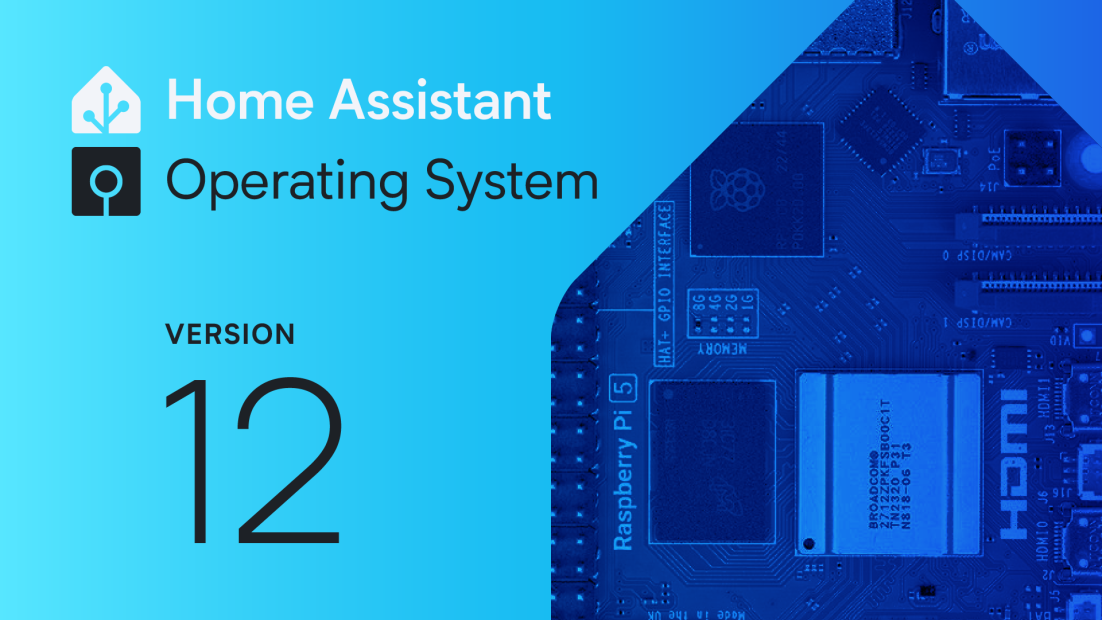
TL;DR: House Assistant OS 12 provides help for Raspberry Pi 5 and ODROID-M1S boards, with the Linux kernel up to date to six.6. Moreover, backups have change into sooner, and add-ons can now sign once they shouldn’t be auto-updated.

Raspberry Pi 5
With the release of Home Assistant OS 12, we officially announce Raspberry Pi 5 support! Many Home Assistant OS users have extensively tested the preview releases during the last few months, and after some initial hiccups with the Raspberry Pi 5-specific update mechanism, things are stable and solid today. As a third of all Home Assistant users currently use a Raspberry Pi board as their dedicated Home Assistant system, we are sure this support will make many users very happy!
Compared to other Raspberry Pi boards, HAOS does not use U-Boot as an extra bootloader. Instead, the Raspberry Pi’s built-in “tryboot” functionality is used to automatically fall back to a previous release in case of an update failure. This new update mechanism integration required us to have a longer testing phase.
In our testing, the higher CPU clock of the Raspberry Pi 5 (up to 2.4GHz) makes Home Assistant feel noticeably snappier compared to previous Raspberry Pi boards. Additionally, a Raspberry Pi HAT that provides NVMe SSD support allows you to extend your Raspberry Pi with fast, reliable, and cost-effective storage. We do recommend using an SD card as the boot medium and using the data disk feature to maneuver many of the House Assistant set up onto the NVMe. That is straightforward to arrange and ensures a dependable boot.
ODROID-M1S
The Raspberry Pi 5 is not the only new board that is supported with this release. We are happy to announce that the family of supported ODROID devices from the Korean manufacturer Hardkernel has become bigger thanks to a community contribution from Tim Lunn (darkxst), who implemented board support for the ODROID-M1S. The ODROID-M1S is the newest single-board computer from Hardkernel, which is similar to the already supported ODROID-M1, which was added in Home Assistant OS 10. This new board offers a slimmer form factor, 4 or 8 GB of RAM on board, and an embedded 64 GB eMMC storage. Home Assistant OS can be booted either from an SD card or the system can be flashed to the eMMC card using the procedure described in the documentation. Whereas the board additionally has an NVMe slot for a solid-state drive, it isn’t supported as a boot system. Nevertheless, identical to on the Raspberry Pi 5, it will probably nonetheless be used as the information disk.
Similar to its bigger brother, the ODROID-M1S is powered by a quad-core ARM Cortex-A55, however whereas ODROID-M1 has (very barely) beefier Rockchip RK3568 SoC, this board sports activities the RK3566. A few of our extra curious readers might discover this is identical processor that’s discovered on our House Assistant Inexperienced! Whereas there are some similarities between these two boards, House Assistant Inexperienced can give you a seamless out-of-box expertise, permitting you to arrange your sensible house in a matter of minutes. However House Assistant can be in regards to the freedom of selection, so in case you are searching for a extra DIY method, ODROID-M1S is perhaps the proper selection for you.
Linux 6.6
House Assistant OS 12 now comes with Linux kernel 6.6! That is excellent news for individuals who need to run their House Assistant on newer {hardware} that lacked help within the earlier 6.1 kernel. This model replace additionally permits us to increase the checklist of supported Wi-Fi and Bluetooth playing cards, together with ones chances are you’ll discover in new mini-PCs, a preferred platform for House Assistant OS. Those that run their installations on a Raspberry Pi (together with the CM4 in House Assistant Yellow) might discover their kernel model nonetheless begins with 6.1. It is because we aren’t utilizing the upstream kernel however the downstream one maintained by the Raspberry Pi builders. However this kernel was additionally up to date to the most recent steady model, which we hope will resolve some sporadic bugs.
House Assistant OS sticks to the LTS (long-term help) kernels, that are often launched as soon as per yr – identical to Buildroot, the bottom system we use for House Assistant OS. This time, we’re barely forward of schedule, as a result of often the kernel replace is finished alongside the bump of the Buildroot model. However don’t fear, the Buildroot replace is coming quickly as properly, and we count on to incorporate its replace in one of many subsequent minor House Assistant OS releases coming within the following weeks. This may conclude this yr’s spring cleansing of House Assistant OS, and we will likely be able to deal with new options and enhancements once more!
Sooner Backups
House Assistant Supervisor and Core’s built-in backup performance has change into a lot sooner. Because of contributions from bdraco, the backup characteristic gained sooner compression speeds attributable to a library named isal, which gives optimized low-level capabilities for compression and decompression. Extra importantly, the backup characteristic now avoids intermediate copies, making it sooner on slower storage media particularly. Should you used uncompressed backups earlier than as a result of the backup was too gradual for you, now’s the time to present compressed backups a strive once more! 😀

House Assistant OS customers’ backup performance is a part of Supervisor. You’ll have obtained the enhancements incrementally over the releases of the previous few weeks. On the time of writing, your set up ought to run on House Assistant Supervisor 2024.02.0 with all these enhancements inbuilt.
Safer add-on auto-updates
Final, however not least, the Supervisor options an auto-update flag for add-ons. Nevertheless, relying on the character of an replace to the add-on, the brand new model may want consumer intervention or have breaking modifications. Add-on builders now have the choice to stop auto-updates to such variations. Customers of the auto-update characteristic may see an replace notification regardless of auto-updates being enabled. Because of this the writer of the add-on determined that this specific replace shouldn’t be auto-updated and as a substitute be manually authorised by the consumer.
Observe: We usually don’t suggest auto-updates for add-ons, as even secure updates may intrude with common operation. For instance, through the computerized replace of an add-on like Z-Wave JS, your Z-Wave gadgets would unexpectedly change into unavailable for a short while. The higher method for such add-ons is to plan a while to keep up your House Assistant system each every so often and replace your add-ons in a batch.
Trending Merchandise










